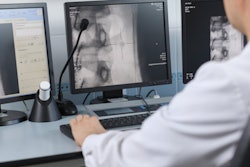High-performance gaming mice offer radiologists multiple custom buttons and superior tracking features that can streamline radiology tasks, according to an article published September 26 in Current Problems in Diagnostic Radiology.
A team led by Sterling Nicholas Lee, of the University of Colorado School in Aurora, noted that programming a gaming mouse for PACS can ultimately reduce cognitive strain, errors, and repetitive strain injuries.
“Our guide offers a step-by-step approach to harnessing the gaming mouse's capabilities for radiology tasks, ensuring radiologists can enhance their workflow and minimize injury risks,” the group wrote.
Various PACS functions, from changing windows, measuring a lesion, measuring a region of interest, or toggling between image sets, involve multiple mouse clicks or movements of the opposite hand to engage keyboard shortcuts, the authors explained. They noted that a 2021 analysis estimated that a radiologist's mouse travels over 1.4 miles in a single eight-hour shift.
Moreover, repeated mouse clicks often require radiologists to shift their focus away from the diagnostic image and impose cognitive and physical strain, as well as result in fatigue and a higher probability of errors, the group added.
“Enter the gaming mouse,” they wrote.
These mice are designed to the high standards of the gaming community and come equipped with programmable buttons and high-precision tracking which can enable radiologists to perform similar work while minimizing button clicks and hand movement, according to the authors.
The guide lays out the hack in 12 steps, with accompanying images illustrating the steps.
The authors noted that the guide specifically uses a Logitech gaming mouse for demonstration but that the fundamental concepts presented can be adapted to other brands or models with comparable customization software. Also, the guide provides a configuration primarily designed for cross-sectional abdominal imaging.
In the same issue of the journal, the authors also penned a 24-step guide on how to program a Logitech gaming keyboard for radiology viewers. This guide takes the approach a step further, they noted, by introducing the concept of multikey macros whereby a single gaming key is assigned to a sequence of inputs ranging from keystrokes to mouse clicks.
In recent years, there has been a significant surge in demand for diagnostic imaging, and this has placed pressure on radiologists to interpret a larger volume of intricate images swiftly, the group wrote.
“Traditional input devices, specifically computer mice, have not met the challenge of increasing radiology efficiency,” Lee and colleagues concluded.
The full article can be found here.



















